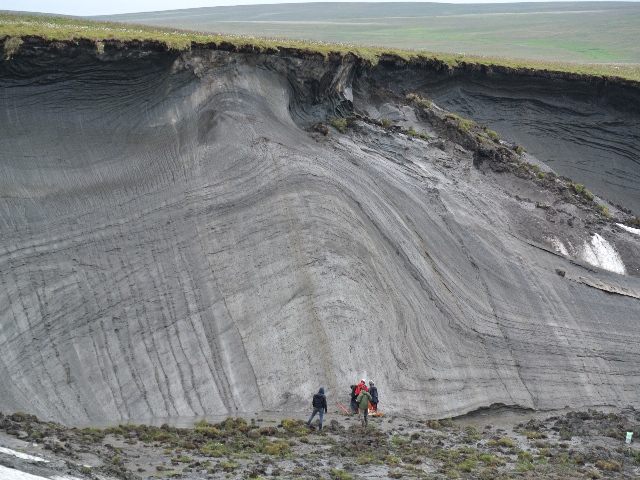[imagesource:wikimediacommons]
The permafrost is in trouble as the climate warms.
The northern reaches of the planet are warming as much as four times faster than the global average, which is causing dormant microbes to rise after spending tens of thousands of years frozen in place. However, there is something else that scientists are actually far more alarmed by than these ‘zombie viruses’.
While it is true that in the summer of 2016, a terrifying disease clawed its way out of the previously frozen ground, sending chills across the globe as the media rang the alarm over ‘zombie viruses’, this seems to be less of a concern to scientists watching the world warm.
That particular case of anthrax bacterial spores awakening in the permafrost in the far reaches of Siberia managed to infect thousands of reindeer in the region, eventually sickening dozens of people and killing a 12-year-old child, but it is carbon that is freaking scientists out more.
Carbon – the stuff that life is made of, and yet, if there is too much, it can turn deadly.
The Messenger notes that if the enormous amount of methane and other carbon sources trapped in the frozen ground makes its way into the atmosphere it could have a profound effect on the planet. As one of climate change’s nastier feedback loops, where warming begets melting begets more warming, the destruction could be humongous.
Permafrost, which is technically ground that has maintained a temperature below freezing for at least two years, covers some 20 million square kilometres (which is bigger than the US) primarily in Russia, Canada and Alaska. This area contains an astonishing amount of carbon and if warming causes the release of just 1% of it, that’s equivalent to about a year’s worth of human-caused emissions.
Christopher Burn, a professor at Carleton University in Canada, thinks that the zombie virus story is a mere distraction compared to this carbon “bomb”:
“There have been people living with permafrost now for 5,000 years and more… and we don’t characteristically have problems associated with strange diseases coming out of permafrost. That’s not our common experience…. In my view, the viruses are an anecdote.”
The carbon bomb is more likely to be slowly expelled, releasing more and more into the atmosphere year by year, rather than become some single catastrophic event.
The other issue with this is that the ground is softening and shifting beneath our feet. The shifting ground has already resulted in collapsing roads, damaged buildings, and impacted military installations, pipelines, and even drinking water supplies, causing huge problems in particular for indigenous people who have made their homes in the far north for thousands of years.
“If you analyze the number of landslides in the Arctic… over the past 10 years, you will be amazed,” said Ekaterina Uryupova, a senior fellow at the Arctic Institute.
The zombie microbes are still out there but they might attract more attention than they deserve, with the media playing a big role in hyping it up.
Bo Elberling, a professor at the University of Copenhagen and director of the Center for Permafrost, has done enough research to state that they have not found any viruses from permafrost layers considered a risk to human health.
Carbon, on the other hand, could be apocalyptic.
[source:themessenger]





